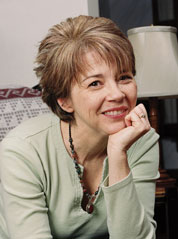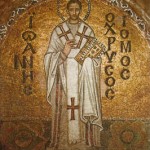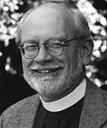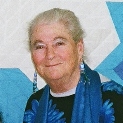Jews and The Passion of Sister Rose
Sister Rose Thering (1920-2006) did her doctoral research on the image of Jews in Catholic textbooks. She received her degree in 1961 from St. Louis University, but her writing would be the catalyst for a significant change. Jews would no longer be labeled the “Christ killers.” The Second Vatican Council would adopt Nostra Aetate (In Our Time), a ground breaking document on non-Christians, including Jews.Sr. Rose Thering’s research came to the attention of Cardinal Augustin Bea at the beginning of Council in 1962. Cardinal Bea was a major force in ecumenical relations. According to Fr. Eugene Fisher, the issue of anti-semitism came up early in the deliberations of the Council and was one of the last to be resolved. Anti-semitic tracts were submitted to the bishops (the Council fathers) and debunked. Diplomatic pressure came from Arab governments. Finally the issue was addressed in 15 sentences comprising section 4 of Nostra Aetate (In Our Time).
These two sentences strike down any biblical notion of the culpability of the Jewish people:
Even though the Jewish authorities and those who followed their lead pressed for the death of
It is telling that this passage refers to the Gospel of St. John 19:6, since this Gospel casts Jews in a very negative light ,as do many other parts of the New Testament. This acrimony toward the Jews is part of a larger conflict between the two groups in the emergence of Rabbinic Judaism and Christianity after the destruction of the Temple in 70 A.D. In fact, the tension with the Christian movement regarding observance of Mosaic law and Jewish practice was also intense. Over time, the Hellenistic segment prevailed by sheer force of numbers and their ability to assimilate into the broader Graeco-Roman culture.
The persistence of anti-semitism can be seen in Mel Gibson’s film, The Passion of the Christ. The blockbuster movie followed the basic story line but contained a lot of materials that were the private revelations of a 19th century German nun. Somehow, Jesus, his family, and followers are no longer Jews but Aryans in the hands of alien hostile Jews. This reinforces something worse than a stereotype. It becomes an archetype of the Christian unconscious that structures dreams, perceptions, and ultimately – genocide.
The Jewish feast, Yom Kippur, the Day of Atonement, comes every year as Summer gives way to Fall. As Yom Kippur approaches, Sr. Rose Thering provides an excellent example of going beyond guilt. She opens the door to a new and better day for everyone.
“She was a one-woman wrecking crew,” said Rabbi James Rudin, senior inter-religious adviser for the American Jewish Committee, and a friend of Thering’s for 36 years. “What she helped wreck was 2,000 years of the teaching of contempt which was built into so much of Christian teaching.”
For an in-depth report, see the section in the Anti-Defamation League site on the 40th anniversary of Nostra Aetate (In Our Time) in October 2005.
Sister Rose’s Passion, a short documentary of Sr. Rose’s life and work, was nominated for an Academy Award in 2005. It is well worth seeing.



















